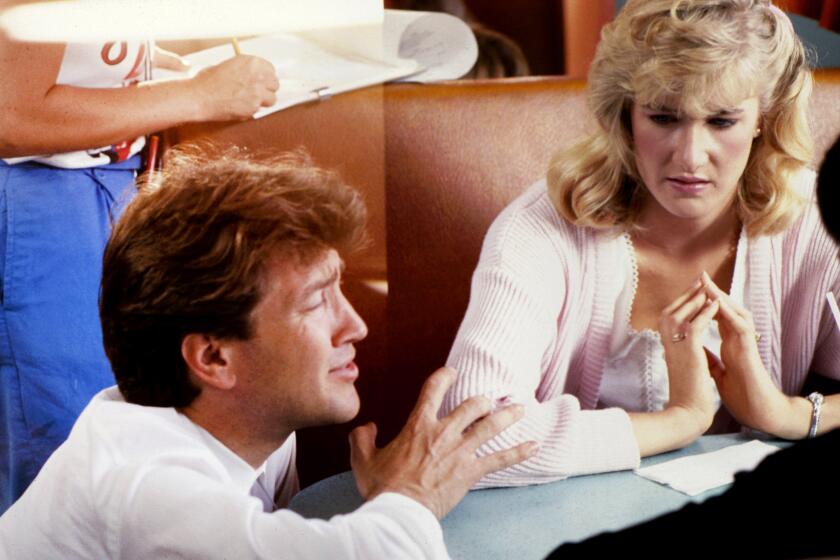The Culture Wars : Dead White Males in Kilts: The Ultimate in PC Violence
- Share via
Just when you thought the white male of history was dead, or at least banished to politically incorrect exile, along come William Wallace and Robert Roy McGregor. These men of mythical renown, whose stories the films “Braveheart” and “Rob Roy” tell, are every bit as much the star as are their better-known portrayers, Mel Gibson and Liam Neeson. And as important as the stories told are the qualities these men embody: honor, trust, pride, bravery, family, loyalty to friend and clan and peoples, a direct connection to land and history.
Sound like John Wayne, perhaps? Or a modern version of the Sitting Bull story? Try both. Indeed, the genius of these films is that they turn political correctness upside-down to work for a whole lot of those previously targeted. In “Rob Roy” and “Braveheart,” white male stars get to play the cowboys and the Indians--right down to the war paint. What’s more, nobody’s complaining! Welcome to the New Western, Medieval-style.
It doesn’t take long for the familiar motifs to show themselves: “Rob Roy” opens as its hero tracks down cattle rustlers. Meanwhile, “Braveheart” reinvents the classic Indians-on-the-horizon scene: A small group of Scots, feigning blunder, lead a squad of English troops into a cul-de-sac trap; the hill behind, empty seconds before, is suddenly lined with Scots warriors. And any kid would recognize the brave in Gibson’s “Braveheart” as he aggressively rides his horse up and down before his men, his wild, long hair framing a face painted blue for war (and the movie poster), while opposite stand the imposing, stolid lines of the English army: the cavalry.
Set in Scotland 500 years apart, both films feature the same enemy: the cartoonishly cunning and ruthless English, fops, rapists and plunderers all, and the greedy Scottish noblemen in cahoots. Both feature bands of simple, prosaic and honor-bound men in non-traditional attire. Both leaders’ wives are violated by English troops, fueling hatred and igniting rebellion. Both men exact vengeance. McGregor through heroic swordsmanship (and acceptance of the resulting child-to-be); Wallace through a dramatically gratifying if improbable fancy: A short but passionate romance with the king of England’s daughter-in-law--assuring a Scottish element to the future crown.
Why these Celtic historical action films all of a sudden? Why the soon-to-be-released “First Knight”--yet another retelling of the (Celtic) King Arthur legend? We may have minority filmmakers partially to thank--primarily those young African-American directors whose films are born of righteous indignation. As they’ve done throughout American history--for example, in music and sports--they’ve clearly influenced their white counterparts, particularly those of oppressed peoples, in this case, the Celts.
This may be an unconscious reaction. Or it may be the result of positive influence--”Rob Roy” director Michael Caton-Jones, a Scotsman, says the film is a way for him to get back to his roots.
Besides, if you had the choice of seeing one of these movies, or one starring Michele Pfeiffer as an ex-Marine trying to reach bright but problem children at an inner-city high school, which would you choose? Reality isn’t a lot of fun these days; it’s difficult, confusing, guilt-ridden. Who needs this, says Hollywood, we’ve got history on our side.
British history, of course, has all the ingredients: love, hate, life, death, sex, internecine violence and gosh, oppression! (Yes, kids, that’s correct: Before powerful countries found new continents to lord over, they bullied their neighbors. Fancy that!) Indeed, as important as these ingredients is the the one these stories don’t have: people of color. No blacks or browns or yellow--save for one English king’s African servant boy, a not-so-subtle pointer for those African-America viewers who aren’t quite sure who the bad guys are. No race, no controversies. Just historical animosity. Audiences of all stripes can sit back, relax and revel in the romance, the bloodshed, the hatred--because it’s all white.
Sure, the English are painted only vile, but are they going to complain? Nah, they’ll take it on the chin, politely. You know, stiff upper lip, good manners and all. The English are the last good bad guys.
But they’ll have their day on screen once again. After all, if we’ve learned anything from history--of the world and of popular culture--the presiding logic always comes down to the same three words: tit for tat. And Hollywood is, of course, only too happy to provide.
Coming soon to a theater near you: Andrew Lloyd Webber’s “Lionheart.”
More to Read
Only good movies
Get the Indie Focus newsletter, Mark Olsen's weekly guide to the world of cinema.
You may occasionally receive promotional content from the Los Angeles Times.










